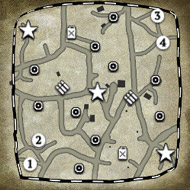 axis
axisProduction: 1938-1942
Number Built: 1,414
Crew: 4
Weight: 9.5 t
Engine Ouput: 125 hp
Speed on Roads: 42 km/h
Armament: 37 mm KwK (t) L/47 gun
2x7.92 mm machine guns
The Czechoslovakian tank TNHP was employed by the Wehrmacht under the name 38(t).

The reliable, high-quality TNHP tanks were claimed by the Wehrmacht after occupying Czechoslovakia. The (t) in its name refers to the tanks origin. Its producion in Pilsen and Prague was still continued for a while.
But when the Soviet Union introduced the T-34 in 1941, the 38(t) increasingly lost importance.
Its 37 mm gun and rivetted armour had become outdated.

(Wilde Sau, translated: "wild boar")
The longer the war lasted, the more the 38(t) was almost exclusively employed in the front's hinterland. Its chassis, however, was continued to be used. It became the basis of the very successful tank destroyer "Hetzer".





































 So much work, so much dedication, props to you !
So much work, so much dedication, props to you !



















 cblanco ★
cblanco ★  보드카 중대
보드카 중대  VonManteuffel
VonManteuffel  Heartless Jäger
Heartless Jäger 